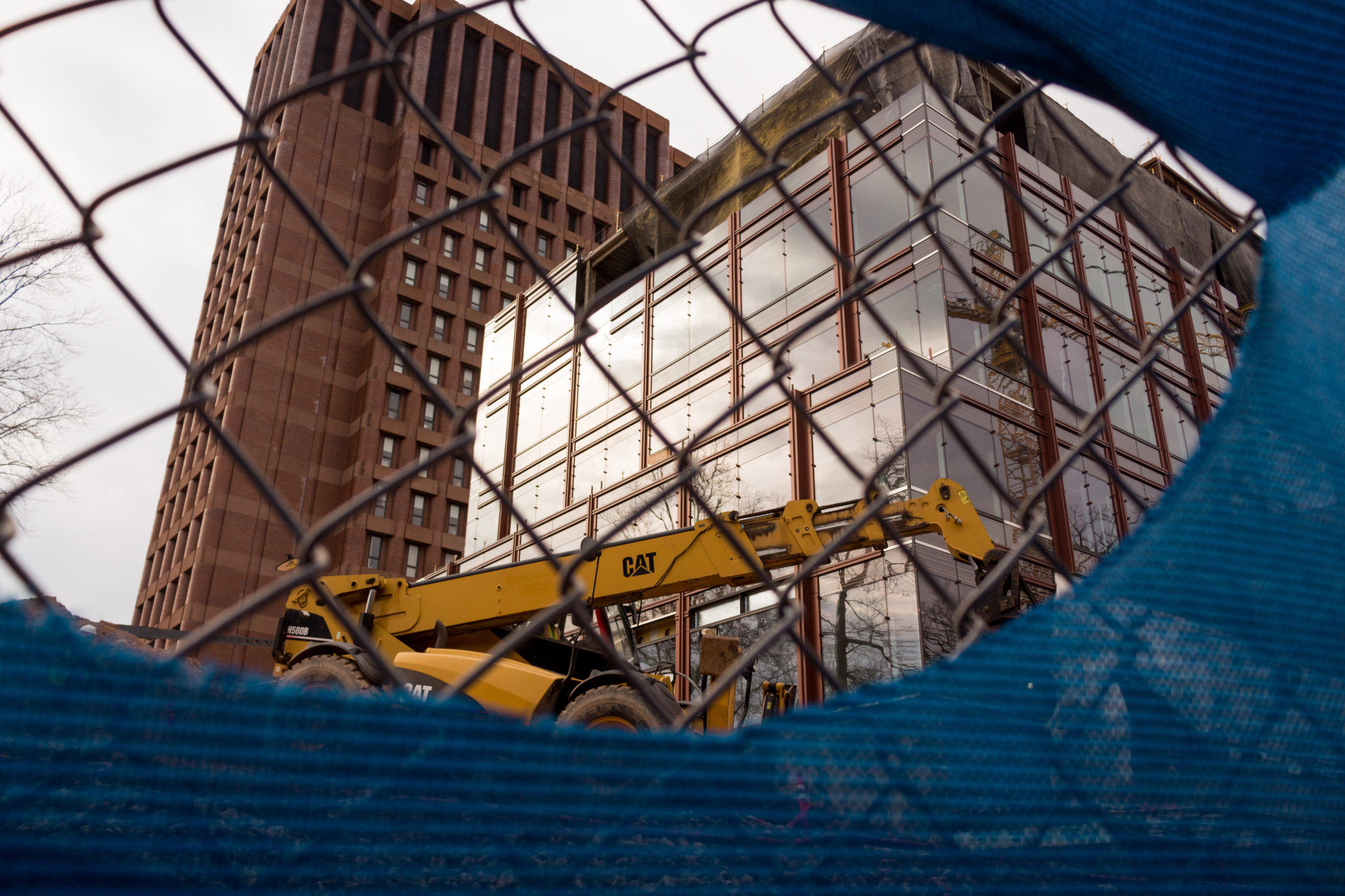
Daniel Zhao
Wielding a giant pair of scissors, University President Peter Salovey dedicated the new Yale Science Building in a ribbon-cutting ceremony that marked the completion of a nearly four-year construction project.
Hundreds of faculty, staff and students gathered in Marsh Lecture Hall on Tuesday afternoon to celebrate the occasion. Following Dean of the School of Engineering & Applied Science Jeffrey Brock’s opening statements, Salovey took to the podium and thanked the building’s design committee and the committee’s chair, professor of Molecular, Cellular and Developmental Biology Anna Marie Pyle. Salovey lauded Yale’s history of scientific discovery and said he hopes the new building will inspire both students — and potential donors — alike.
“In a hundred years, when people look back to this moment, they will see that this is when we put a stake in the ground, and identified — reaffirmed — our aspirations in scientific research and education at Yale,” Salovey told the crowd. “And they will see that this building played a vital role in fulfilling our shared vision to accelerate the pace of scientific discovery at Yale in order to benefit the lives of people around the globe.”
In the speech, Salovey listed the new technologies available at the Yale Science Building, including a new Quantitative Biology Institute and a cryo-electron microscope, which allows researchers to see cells in atomic detail. According to Pyle, who also spoke at the ceremony, these features are accompanied by a greenhouse and an aquatics and insects lab. Also, excavation below the Yale Science Building has allowed for vibration-free laboratories.
Pyle added that in the future the labs in the Yale Science Building can be dismantled and redesigned for science “that we don’t even envision today.”
Salovey’s remarks were followed by a speech from New Haven Mayor Toni Harp, who thanked Yale for its confidence and investment in New Haven.
“As an alumna [of the University], I couldn’t be more proud about Yale’s perpetual motion and relentless progress,” Harp said. “As mayor, I couldn’t be more pleased that it’s happening right here in New Haven.”
The Yale Science Building, which features 240,000 square feet of laboratory space across seven stories, will house the MCDB Department. Some members of the Molecular Biophysics and Biochemistry and Physics Departments will also enjoy new spaces within the building.
The Yale Science Building is just one of the University’s major investments in STEM over the past year. According to Yale’s 2018-2019 financial report, the fiscal year saw a 21.8% increase in capital spending from the previous year. While construction for the Yale Science Building partially contributed to this year’s total of $447 million, other infrastructure improvements at the Law School and the Hall of Graduate Studies added to Yale’s expenditures.
The dedication ceremony comes as the University redoubles its investments in STEM. Shortly after his 2013 inauguration, Salovey listed seven priorities for his presidency, one of which was for Yale “to be a world leader in basic, translational, and applied scientific and social scientific research.”
In 2016, Salovey wrote in a university-wide statement about his plans to reinforce the sciences at Yale. While the University is consistently highly-ranked in the humanities and social sciences, other schools consistently outstrip Yale in rankings of research institutions, Salovey said. In his statement, Salovey said that the Yale Science Building would represent part of a long-term “ambitious investment” in STEM research and education at Yale.
“This is just one example from one part of campus,” Salovey wrote about the Yale Science Building. “We will need to make these kinds of investments — and keep making them over time — in the sciences across the university.”
MCDB professor Scott Holley — who teaches developmental biology— told the News that he is thrilled to be working in the building because it offers both natural light and updated research spaces that facilitate interaction between scientists.
According to Holley, Kline Biology Tower’s constant water leaks and HVAC issues made Kline “really a depressing place” to do research. He added that a power outage earlier this year was “salt in the wound.”
“I walk into YSB each day and I am happy to be at work,” Holley wrote in an email to the News. “That was not the case in Kline Tower.”
Construction for the Yale Science Building began in 2017 with the demolition of J.W. Gibbs Laboratory, which had stood since 1955 and primarily housed physics and astronomy laboratories. According to the News, the Hamden-based design firm Stantec designed the structure of the Yale Science Building, while Pelli Clarke Pelli Architects of New Haven planned its public spaces.
The new Yale Science Building is located at 223 Prospect Street.
Valerie Pavilonis | valerie.pavilonis@yale.edu







